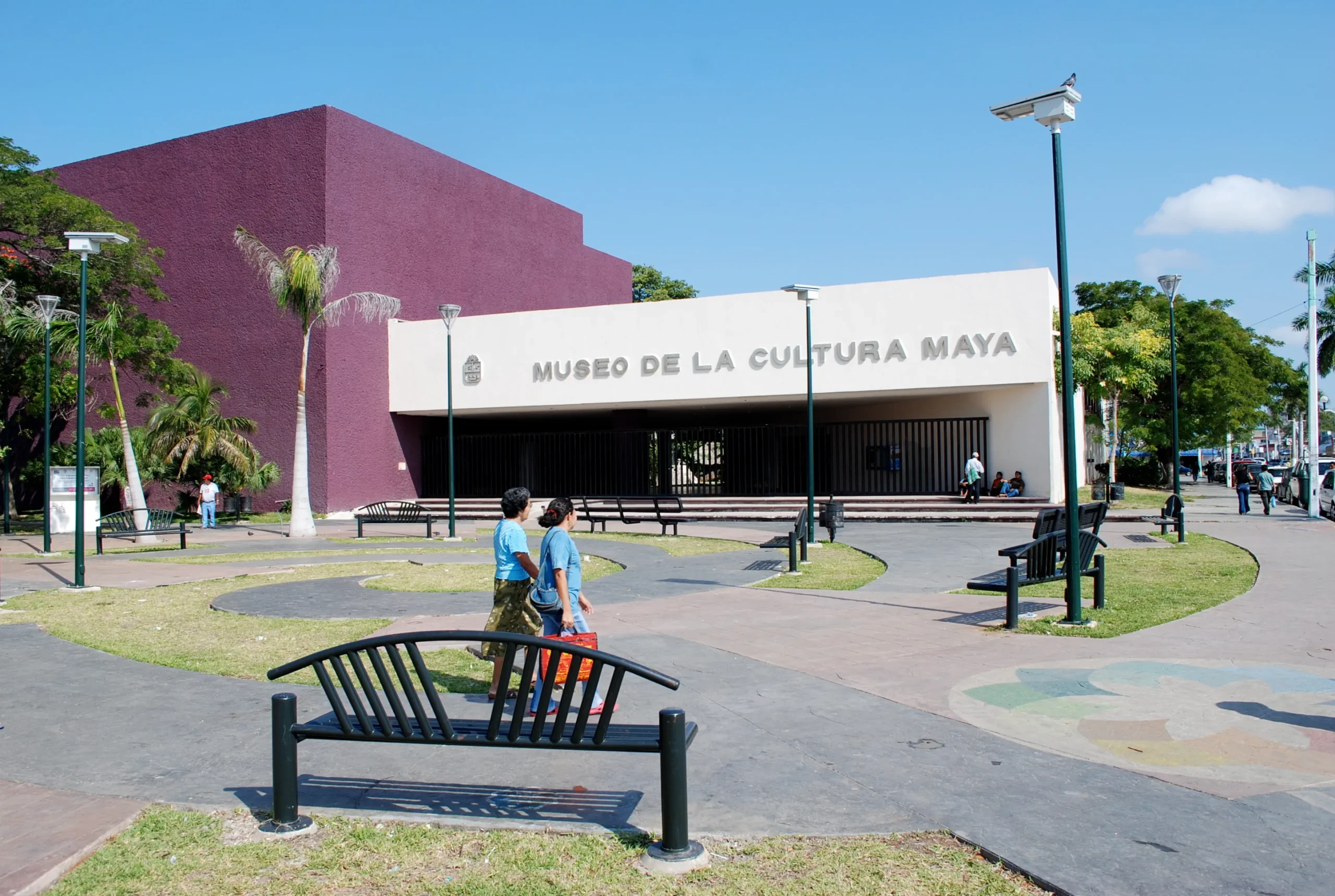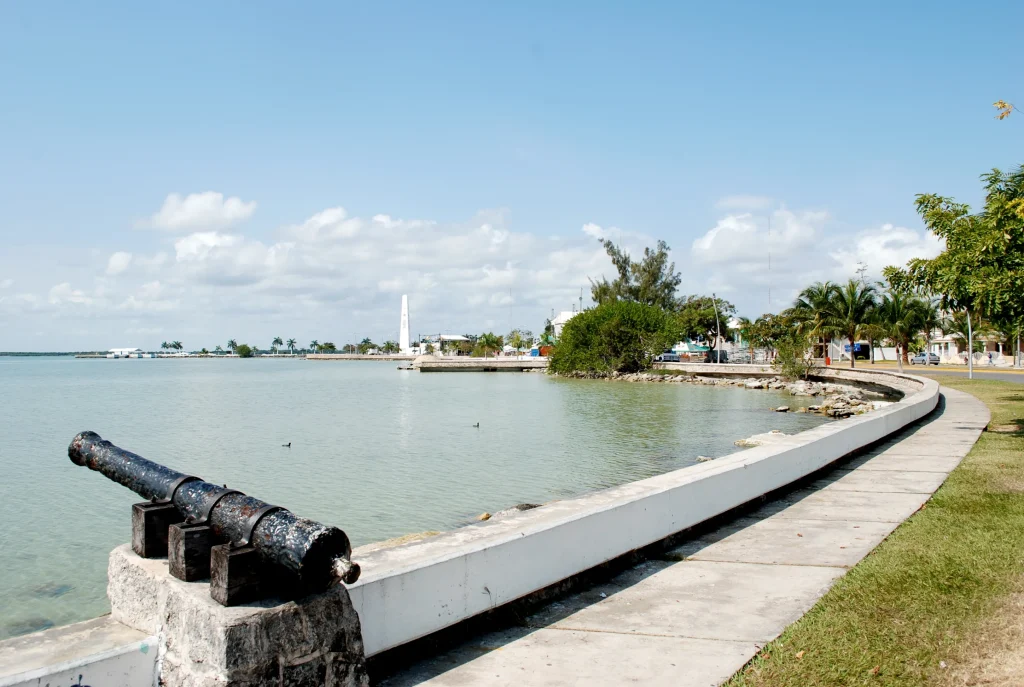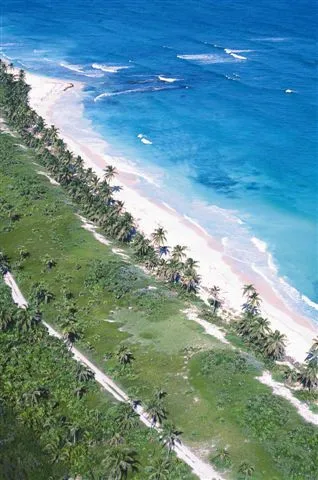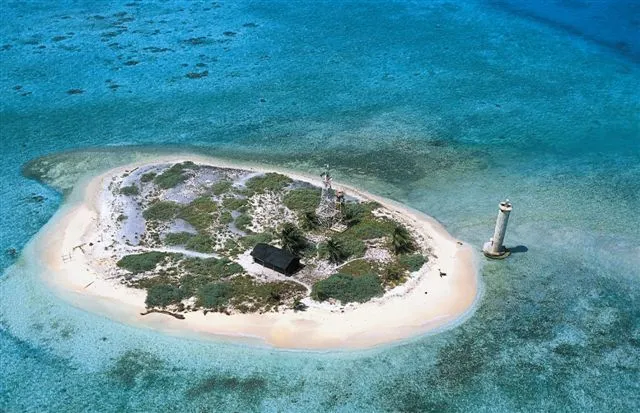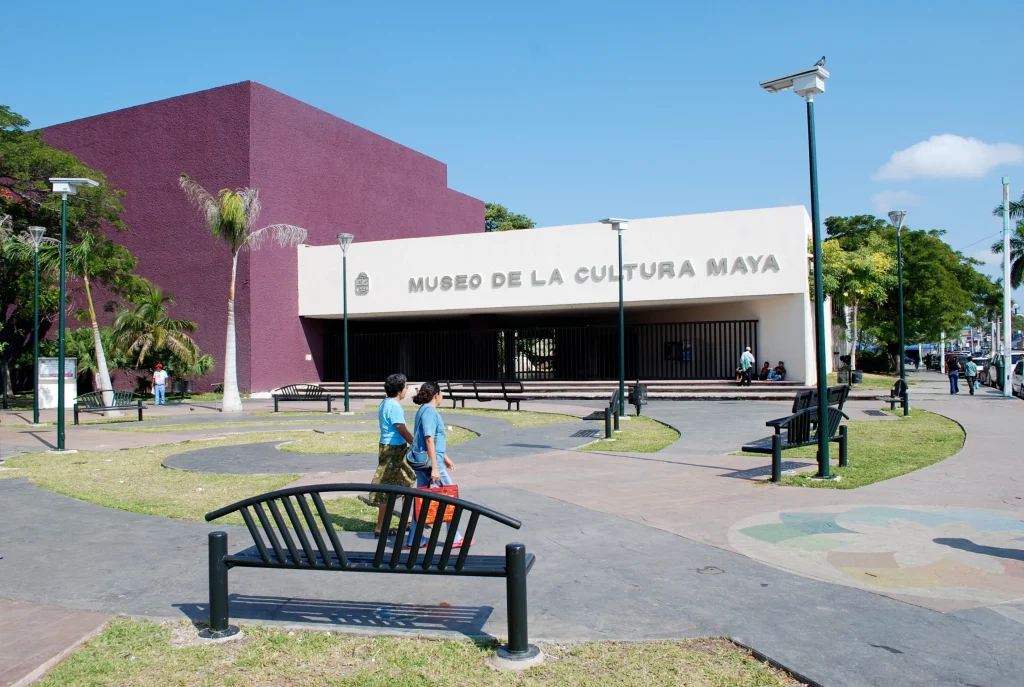Lying to the south of the popular Riviera Maya region and stretching all the way to Mexico’s border with Belize is one of North America’s most unexplored coastal regions – the “Costa Maya. Is this a viable place for expat living? As developers push further south and a new international airport opens in Tulum by 2024, its only a matter of time this remote shore becomes exploited for year ‘round expat living.
The Costa Maya was once an important region of the Yucatan’s vast Mayan Empire. Jungle-shrouded archaeological sites and traditional Mayan villages remain as reminders of the area’s rich history. The natural setting is spectacular—highlighting deserted beaches, lagoons, reefs, and “cenotes,” Mexico’s unique sacred sinkholes. As recently as the 1970’s, this region was backwater or Mayan coastal coconut palm ranchos, with zero highway access.
The area is unpopulated and undeveloped. It remained a truly frontier region of Mexico well into the 20th century. Quintana Roo State was only formed in 1974. While the state’s marquis attractions of Cancun, Cozumel and the Riviera Maya have grown remarkably since the 1980’s, the Costa Maya began to attract attention from developers, the Mexican government and cruise lines only in the past few years. In fact, most of the coastal areas have primitive road access, and only receive visitors by boat.
The Costa Maya appeals to travelers and potential retirees wanting to experience one of the Caribbean’s last undeveloped coastal regions. The area’s fishing and diving are excellent. Tarpon, bone fish and other feisty fish draw a dedicated following of serious saltwater fly fishers. The Chinchorro Bank Biosphere Reserve is the largest coral atoll in the Northern Hemisphere. It is a shipwreck diver’s paradise – strewn with Spanish galleons. Several ecological reserves offer unique nature viewing.
Development plans are underway by FONATUR, Mexico’s government agency in charge of new resort development. Plans call for eco-friendly hotel development, and golf courses. The fully operational cruise marina at Mahahual (pronounced “mah-hah-WAL”) is already receiving ships. Planners forecast the Mahahual will be “the next Playa del Carmen” but want to keep development to more of a “Robinson Crusoe meets the Four Seasons.”
Costa Maya Layout
The main geographic features of the Costa Maya include:
- the amazing 1.3-million-acre Sian Ka’an Biosphere Reserve (a UNESCO World Heritage Site);
- a 150-mile-long seacoast (sprinkled with small fishing villages and unspoiled beaches);
- a series of small inland towns that lie along Highway 307;
- the emerging cruise port city of Mahahual;
- Chetumal, along the border with Belize and capital of Quintana Roo State.
Let us look at these areas in greater detail…
Sian Ka’an Biosphere Reserve
The Sian Ka’an Biosphere Reserve is located 137 km south of Cancun on the east coast of the Yucatán peninsula. The reserve (a UNESCO World Heritage Site) contains tropical forest, mangroves and marshes, and a marine environment which includes a section of the longest barrier reef in the western hemisphere. It provides a habitat for a remarkably rich flora and a fauna comprising more than 300 species of birds, as well as a large number of the region’s characteristic terrestrial vertebrates.
The Biosphere Reserve concept has developed since 1974 by UNESCO. It is an ambitious attempt to combine the protection of natural areas and the conservation of their genetic diversity with scientific research and sustainable research. Reserves consist of a strictly protected core area, a designated buffer zone used for non-destructive activities, and an outer transition zone, merging with unprotected land, where traditional land-use and experimental research take place.
Sian Ka’an Communities
In the language of the Maya who continue to inhabit this region, Sian Ka’an means ‘Origin of the Sky’. Today the region is sparsely populated, with only around 2,500 residents of Mayan origin. Most reside either in Punta Allen, Punta Herrero, or on rancherias scattered along the coast and in the forest. They make their living mostly as either fishermen (Punta Allen is Mexico’s largest Caribbean lobster producer), chicleros and milpa farmers.
Felipe Carillo Puerto
Located within the Sian Ka’an Biosphere Reserve, Felipe Carrillo Puerto is a gathering point for the Mayan communities in the region. Founded in 1850 as Chan Santa Cruz, it was the refuge of the rebel Cruzoob during the Caste War. In 1901, when the city fell into federal hands, there were already stone buildings, a large town square, broad, well-designed streets, and a church built by native Maya. The town was later renamed after a populist Governor of Yucatán State who was assassinated in the early 1900’s.
Among the many sights to see in and around Felipe Carrillo Puerto is the Chapel of the Cross and special ceremonies officiated by Mayan priests in honor of the “Talking Cross”, a legend born during the Caste War. Also, not to be missed is the Tihosuco Museum. Dedicated to the Caste War, it depicts the development of this historic era, housed in a magnificent 18th century building. Finally, sample the traditional Mayan cuisine and experience its living culture.
Bacalar Lagoon
Bacalar Lagoon feeds itself from the Caribbean Sea as well as from the Río Hondo (which separates Belize from Mexico). A smattering of expats are living here. In 1545, Spanish conquerors established a village on its banks. The village was destroyed in 1592 and repopulated in 1726 with inhabitants from the Canary Islands. A large fort was built to fend off attacks by English pirates who coveted the region’s precious woods. Later, in the 19th century, the Mayas seized the complex from the Spaniards. A visit to the fort-turned-museum is a must.
Coastal Region & Mahahual Port
Small villages line the coast of the Costa Maya. In and around the towns of Punta Pulticub, El Uvero, Puerto Bravo, Punta Xcayal and Xcalak are unspoiled, palm-lined beaches perfect for diving, snorkeling or beach activities. Mahahual is the area’s new port destination. Mahahual’s growing popularity is due to its status as a major cruise port, and its proximity to excellent diving at Chinchorro Reef. The village of Mahahual is small (around 1,000 inhabitants), but busy with visitors discovering the Costa Maya. Travelers will be surprised at the shopping opportunities here. Due to its function as a cruise port, a 70,000 square foot shopping center and entertainment complex boasts top lines of fragrance, jewelry, liquor, pottery, and handmade Mexican crafts.
Chinchorro Reef
Sightseeing in the Costa Maya is dominated by ecological and archaeological wonders. One of the greatest examples is the vast Chinchorro Reef. Approximately the size of Cozumel Island, Chinchorro is part of the Great Mayan Reef. In its interior is a lagoon varying in depth between six and twenty-four feet. Human-sized living sponges, live brain corals and traces of shipwrecks from pirate vessels of the sixteenth century make for some of the best diving in the Caribbean.
Chetumal-Oxtankah
The city of Chetumal (Capital of the State of Quintana Roo) is host to a fine museum of the Mayan Culture, one of the best in the Yucatan Peninsula. It is a modern, prosperous and culturally diverse city adjacent to the Belize border. Just 16 kms. north of Chetumal are the remains of one of the oldest Mayan cities of the Yucatan region. Known as Oxtankah. It dates back to 350 A.D. Oxtankah is said to be the adopted hometown of the infamous warrior Guillermo Gerrero, a shipwrecked Spaniard who married a Mayan Princess, who later gave birth to the first known mestizo (person of mixed blood).
Kohunlich, Dzibanche & Kinichna
A series of inland archaeological treasures await visitors to the Grand Costa Maya.
Unlike any other, Kohunlich offers the most striking sculptural work found in the Mayan Empire. Nearby, the cities of Dzibanché and Kinichná are linked architecturally as cities where the sun god was worshiped. Built between 250 and 350 A.D. (right at the peak of the Roman Empire), these great Mayan cities were among the last to be discovered by European explorers.
Climb the tallest temple at Dzibanché for a breathtaking view of the surrounding area.
Living Here
As the Quintana Roo coast and the new “Tren Maya” extend their notoriety around the world, finding rustic Caribbean coast and authentic Mayan towns will be harder and harder. The “florescent people” tourism hoards that overwhelm the archaeological sites and eco-parks of the rest of the Caribe Mexicano are not an issue in this region. Remoteness is what you’d be seeking when living here, with Chetumal as a base for shopping and services. A new development called New Mahahual is being created directly inland from the port. Yes, there will be sacrifices and the summer/fall hurricane season must be considered.


